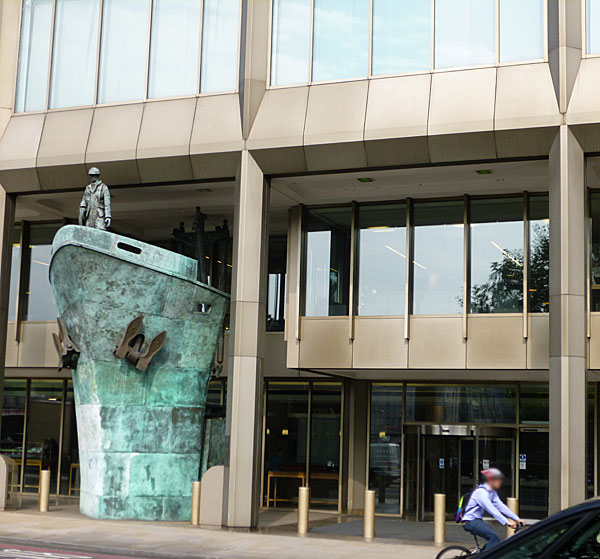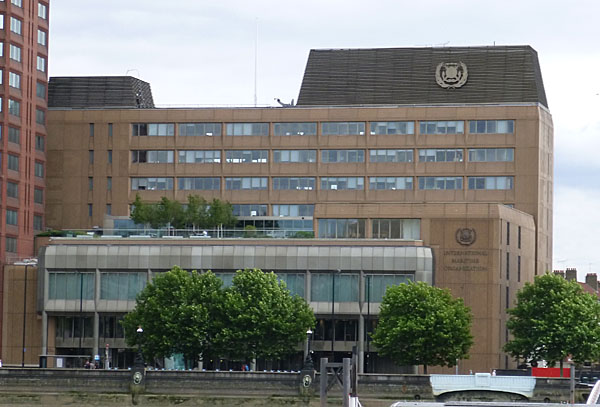| Architect |
Douglass
Marriott, Worby & Robinson |
| Date
Built |
1977 - 1982 |
| Location |
4 Albert
Embankment |
| Description |
|
| The Pevsner
Guide describes this office building as, "A
well proportioned composition with a
more self-effacing four-storey front of
yellow brick, taller behind. Both
buildings display the current abhorrence
of flat roofs by encasing their lift
gear in prominent steeply hipped caps." The organization's website explains that it is, " ... the only United Nations specialized agency to have its Headquarters in the United Kingdom. It has 170 Member States and three Associate Members." It concerns itself with a wide variety of issues faced by seafarers including, " ... all matters relating to the safety of shipping, as well as addressing maritime security issues and piracy and armed robbery against ships." The IMO's motto is, " ... safe, secure and efficient shipping on clean oceans."  A seven-metre high, ten-tonne bronze representation of the bow of a cargo ship projects from the front of the building. A lone seafarer stands on the deck looking out across the Embankment to the Thames. This is the Seafarers Memorial dedicated to those who have been lost at sea and to emphasize the importance of seafaring in the economy of the world. It was created by Michael Sandle who is quoted as saying about it that, "My proposal for a sculpture for the International Maritime Organisation’s Headquarters is very clearly based on a cargo ship. I have chosen a ship because it signals immediately and unmistakably what the organisation is about. Only a truly monumental sculpture would work because the frontage of the IMO building is very large and the space allocated for a sculpture is a particularly difficult one to articulate. Anything else would simply be swallowed up and become invisible. My proposal is intended to work with the façade of the building and enhance its architectural features. I envisage the sculpture to be realised in cupro-nickel alloy that will retain a light silver-gold colour resistant to corrosion and which will work well with the anodised aluminium cladding of the building. The sculpture would be big enough to provide a proper focus to the building. I have attempted to transform a ship into a cathedral. Visitors looking up at it at close range would experience resonances similar to being in one; it is not for nothing that the longitudinal axis of a cathedral is called the Nave. It is important that the bow of the ship supporting the figure, which is the main feature visible to roadside viewers, should project outside the façade line so as to provide sight-lines to anyone approaching the building obliquely."  |
|
|
International
Maritime Organization, London
 |
